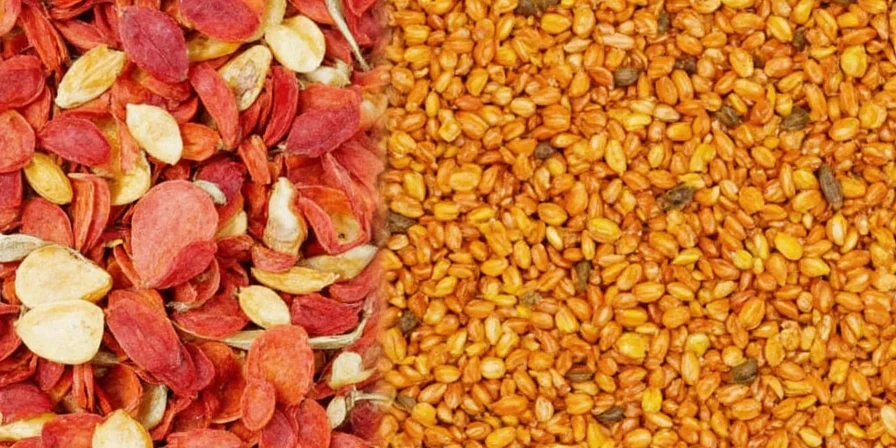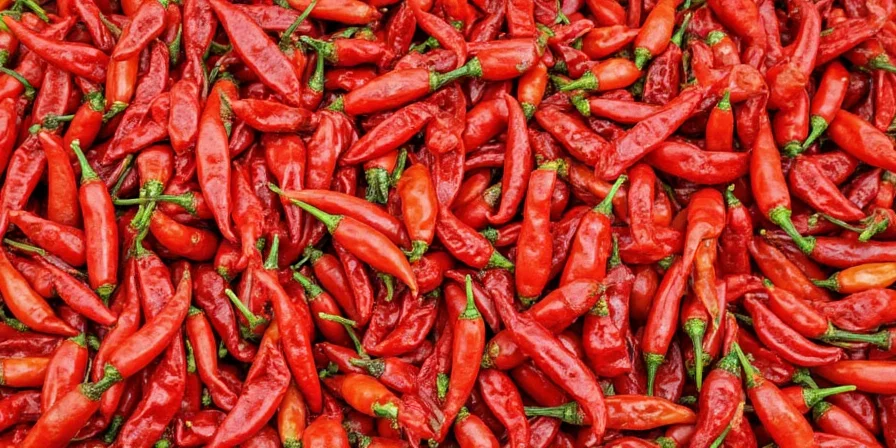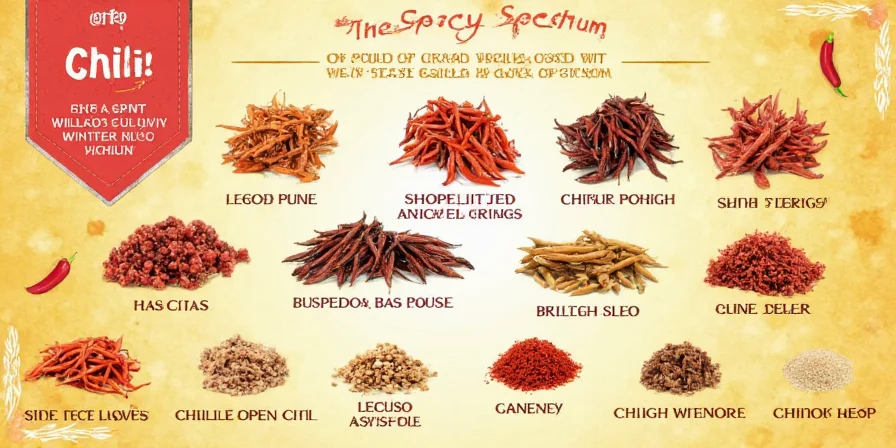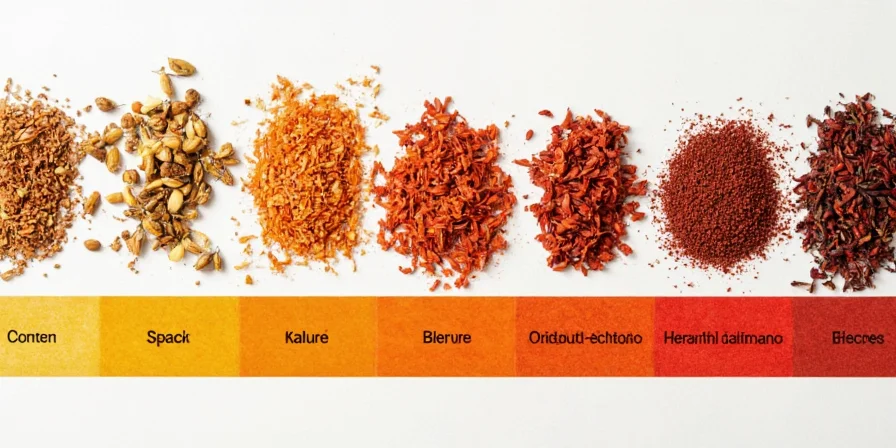If you've ever stood confused in the spice aisle wondering which dried Mexican chiles to buy for authentic Mexican cooking, you're not alone. The most popular dried Mexican chiles—ancho, guajillo, and chipotle—offer distinct flavor profiles that can make or break your mole, salsas, and traditional dishes. This practical guide cuts through the confusion with exactly what home cooks need: heat level comparisons, substitution charts, preparation secrets, and beginner-friendly recipes that deliver authentic results.
Quick Reference: Top 5 Dried Mexican Chiles for Home Cooks
- Ancho (mild, 1,000-2,000 SHU): Fruity, raisin-like flavor - perfect for mole poblano
- Guajillo (medium, 2,500-5,000 SHU): Tangy, berry notes - essential for adobos and salsas
- Chipotle Morita (medium, 5,000-10,000 SHU): Smoky depth - ideal for marinades and stews
- De Árbol (hot, 15,000-65,000 SHU): Bright heat - best for table salsas
- Cascabel (mild-medium, 1,000-3,000 SHU): Nutty flavor - great for sauces needing subtle warmth

Which Dried Mexican Chiles Should You Buy? A Practical Guide
Most home cooks only need three essential dried chiles to make authentic Mexican dishes: ancho for rich, fruity depth in moles; guajillo for tangy brightness in salsas; and chipotle for smoky complexity. Skip the specialty varieties until you've mastered these basics. When shopping, look for chiles that are deeply colored (rich mahogany for anchos, vibrant red for guajillos), flexible when bent, and emit a sweet, fruity aroma—not musty or stale.
Heat Level Comparison & Substitution Chart
Confused about Scoville ratings? This practical guide shows exactly how much heat each chile delivers and what to use when you can't find the specific variety:
| Dried Chile | Heat Level (SHU) | Best Flavor Profile | Perfect For | Easy Substitution |
|---|---|---|---|---|
| Ancho | 1,000-2,000 | Fruity, raisin, subtle sweetness | Mole poblano, pipián | Guajillo + 1/4 tsp cocoa |
| Guajillo | 2,500-5,000 | Tangy, green tea, berry notes | Adobos, pozole, marinades | California chile + pinch of vinegar |
| Chipotle Morita | 5,000-10,000 | Smoky, earthy, complex | Bean stews, adobo sauce | Powdered chipotle + dash of liquid smoke |
| De Árbol | 15,000-65,000 | Bright, clean heat | Table salsas, escabeche | Cayenne pepper (1/2 amount) |
| Cascabel | 1,000-3,000 | Nutty, earthy, mild warmth | Romesco sauces, stews | Guajillo + pinch of cumin |

Simple Preparation Techniques for Perfect Results
You don't need complicated methods to unlock amazing flavor from dried chiles. Follow these three essential steps for consistently great results:
- Quick Toasting: Warm chiles for 15-20 seconds per side in a dry skillet until fragrant but not brittle. This enhances flavor without bitterness.
- Smart Seeding: Remove seeds only for mild dishes; the membranes contain most flavor compounds. For moderate heat, remove half the seeds.
- Perfect Hydration: Soak in hot (not boiling) water for 20 minutes. Add a splash of vinegar to brighten flavors in salsas, or orange juice for moles.

5 Beginner-Friendly Recipes Using Dried Mexican Chiles
Start with these accessible recipes that deliver authentic flavor without specialty ingredients:
1. 20-Minute Ancho Chicken Mole (Simplified)
Perfect for weeknight dinners with authentic mole flavor
- 3 dried ancho chiles, seeded and toasted
- 1 cup chicken broth
- 2 tbsp almond butter (or peanut butter)
- 1 tbsp Mexican chocolate or dark chocolate
- 2 chicken breasts, cooked and shredded
Soak chiles in hot broth 20 minutes. Blend with almond butter and chocolate until smooth. Simmer with chicken 5 minutes. Serve with rice and warm tortillas.
2. Guajillo-Tomato Salsa (Authentic Table Salsa)
Better than restaurant-style with perfect tangy heat
- 4 dried guajillo chiles, toasted
- 3 plum tomatoes, roasted
- 1/4 white onion
- 1 garlic clove, roasted
- 1/2 cup cilantro
Soak chiles 20 minutes, then blend with other ingredients. Adjust salt to taste. Let rest 30 minutes before serving for best flavor.
3. Chipotle Morita Bean Soup (One-Pot Meal)
Creamy, smoky, and ready in 30 minutes
- 2 chipotle morita chiles, soaked
- 1 can black beans, drained
- 1 cup vegetable broth
- 1/2 avocado, diced
- Lime wedges for serving
Blend soaked chiles with broth until smooth. Simmer with beans 15 minutes. Top with avocado and lime.

Frequently Asked Questions
What's the easiest dried chile for beginners to start with?
Ancho chiles are the perfect starting point—they're mild (1,000-2,000 SHU), have a rich fruity flavor that's hard to mess up, and work in everything from soups to desserts. They're the most forgiving dried chile for beginners.
How can I tell if dried chiles are still good to use?
Fresh dried chiles should be deeply colored (not faded), slightly flexible when bent (not brittle), and emit a sweet, fruity aroma. If they're dusty, crumbly, or smell musty, they've lost their flavor and should be replaced. Properly stored, they last 1-2 years.
Which dried chile gives flavor without too much heat?
Cascabel chiles offer the best balance—mild heat (1,000-3,000 SHU) with dominant nutty and earthy notes. They deliver authentic Mexican flavor without overwhelming spice, making them perfect for everyday cooking where you want flavor first and heat second.
What's the secret to making dried chiles taste authentic?
The professional trick is to toast them briefly (15-20 seconds per side) before soaking. This unlocks deeper flavors without bitterness. Also, never skip the soaking step—20 minutes in hot water rehydrates them properly for blending into smooth sauces without graininess.
Storage Tips to Maximize Freshness
Keep your dried Mexican chiles tasting fresh for months with these simple storage methods:
- Whole chiles: Store in airtight containers away from light and heat. They'll stay fresh for 1-2 years.
- Ground chiles: Use within 3 months for best flavor (they lose potency quickly).
- Freezing trick: Freeze whole chiles in vacuum-sealed bags for extended freshness (up to 3 years).
- Revival method: If chiles seem stale, toast them 10 seconds per side to refresh flavors before using.

Master authentic Mexican flavors by starting with just three essential dried chiles: ancho for richness, guajillo for brightness, and chipotle for smokiness. With these in your pantry and the simple techniques above, you'll create restaurant-quality dishes that impress every time.











 浙公网安备
33010002000092号
浙公网安备
33010002000092号 浙B2-20120091-4
浙B2-20120091-4